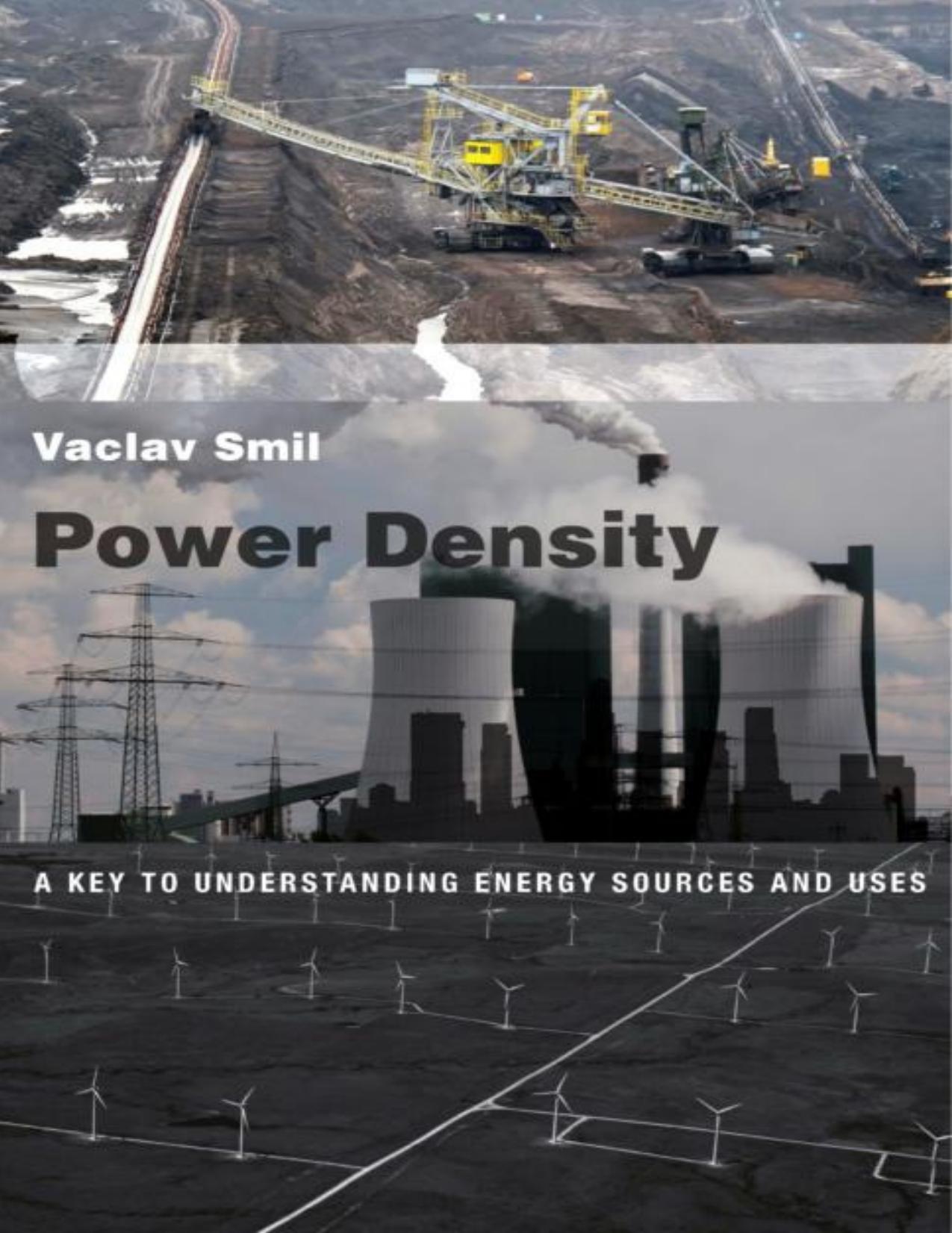Power Density: A Key to Understanding Energy Sources and Uses by Vaclav Smil

Author:Vaclav Smil [Smil, Vaclav]
Language: eng
Format: epub, pdf
Published: 2015-05-25T22:09:00+00:00
Figure 5.3
Futtsu power station and LNG terminal, Japan. Tokyo Electric Power Company (TEPCO).
Gas combustion in large boilers of central power plants has been eclipsed by burning in gas turbines, efficient and flexible energy converters that now come in capacities ranging from 1 MW to 375 MW, the record rating by 2013, for the Siemens SGT5-8000H model installed in Irsching near Ingolstadt (Siemens 2013c). The Swiss Brown Boveri Corporation pioneered the use of gas turbines just before World War II, but the widespread adoption of these machines came only during the 1960s, especially after the great November blackout in the northeastern United States in November 1965 showed the need for swiftly deployable generators (Smil 2010b). The expansion was also helped by the adoption of a combined gas cycle: hot exhaust gases leaving the turbine are used to produce steam for an attached steam turbine, and the overall conversion efficiency is as high as 60%, a rate unrivaled by other modes of thermal electricity generation.
Aeroderivative turbines (jet engines adapted for stationary uses), made by GE, Rolls Royce, and Pratt & Whitney (P&W), are also very efficient (about 40%), and some are available as fully assembled units on trailers. A modified P&W FT8 jet engine with a capacity of 25 MWe fits on two trailers and can generate eight hours after arrival (PW Powersystems 2013).The turbine itself occupies no more than 140 m2, and even with its control trailer, access roads, fuel and electricity connections, and a safety perimeter buffer it claims only 600 m2 (a 40-m x 15-m rectangle), implying a power density of nearly 42,000 W;/m2. A larger unit, the 60-MW SwiftPac, is placed on concrete foundations, claims less than 700 m2 (85,000 W;/m2), and could be ready to generate in just three weeks.
Gas turbines can thus easily be accommodated on small lots in industrial areas. The Delta Energy Center in Pittsburg, California, demonstrates this flexibility (Calpine Corporation 2013a). Calpine Corporation located the plant on an undeveloped 8-ha lot at the Dow Chemical Company facility, and with an 835-MWe combined-cycle capacity its rated power density is nearly 10,500 W;/m2. Gas turbines can be also placed on land that is already occupied by large power plants, a choice that eliminates contentious application and approval processes for new plant sites. The large (1.36-GWe) English Didcot-B plant in Oxfordshire is a perfect example of this option. It was built between 1994 and 1997 within a larger preexisting site of Didcot-A, a 2-GWe coal-fired station whose construction (completed in 1968) had met with a great deal of opposition. The gas-fired plant, with more than two-thirds of the original coal plant's capacity, now takes up less than 10% of the entire site.
Download
Power Density: A Key to Understanding Energy Sources and Uses by Vaclav Smil.pdf
This site does not store any files on its server. We only index and link to content provided by other sites. Please contact the content providers to delete copyright contents if any and email us, we'll remove relevant links or contents immediately.
Man-made Catastrophes and Risk Information Concealment by Dmitry Chernov & Didier Sornette(5958)
The Revenge of Geography: What the Map Tells Us About Coming Conflicts and the Battle Against Fate by Kaplan Robert D(4053)
Zero Waste Home by Bea Johnson(3809)
COSMOS by Carl Sagan(3593)
Good by S. Walden(3523)
In a Sunburned Country by Bill Bryson(3509)
The Fate of Rome: Climate, Disease, and the End of an Empire (The Princeton History of the Ancient World) by Kyle Harper(3036)
A Wilder Time by William E. Glassley(2838)
Camino Island by John Grisham(2781)
Organic Mushroom Farming and Mycoremediation by Tradd Cotter(2664)
The Ogre by Doug Scott(2659)
Human Dynamics Research in Smart and Connected Communities by Shih-Lung Shaw & Daniel Sui(2480)
Energy Myths and Realities by Vaclav Smil(2464)
The Traveler's Gift by Andy Andrews(2438)
9781803241661-PYTHON FOR ARCGIS PRO by Unknown(2345)
Inside the Middle East by Avi Melamed(2333)
Birds of New Guinea by Pratt Thane K.; Beehler Bruce M.; Anderton John C(2239)
A History of Warfare by John Keegan(2216)
And the Band Played On by Randy Shilts(2170)
